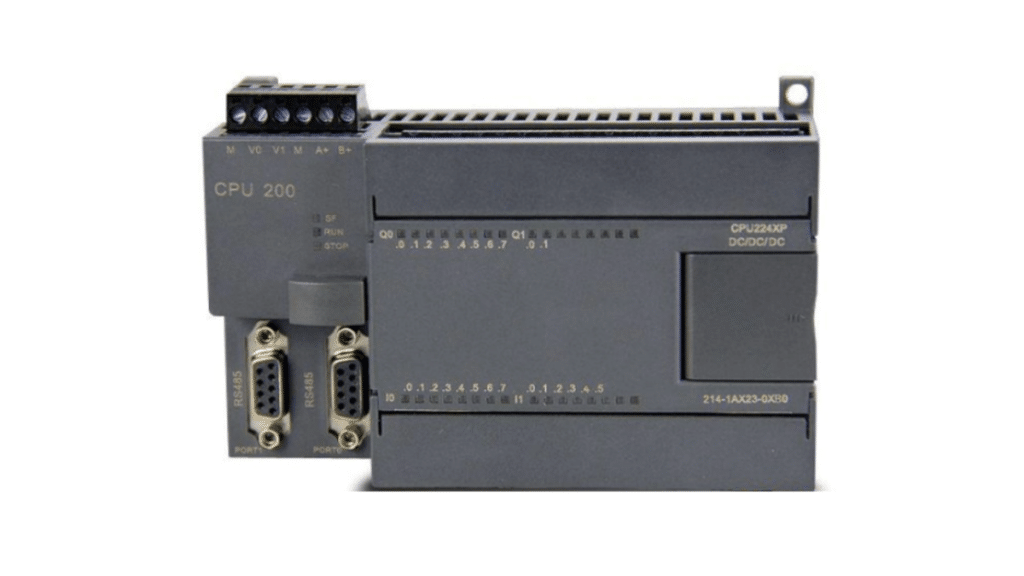PLC, or Programmable Logic Controller, is an electronic system designed for digital operations specifically tailored for industrial environments. It utilizes programmable memory to store programs and execute user-oriented instructions such as arithmetic operations, sequential control, timing, counting, and logical operations. Through digital or analog input/output interfaces, PLCs control various types of machinery or production processes. With rapid advancements in PLC technology, it has gained widespread application in industrial control fields, becoming a key device for industrial automation and efficient production.
The application fields of PLCs are extensive, covering industries such as power, petroleum, chemical, steel, machinery manufacturing, and automotive manufacturing. In these sectors, PLCs are used for automating control, managing production processes, sequential control, and logical control tasks.
The reliability and flexibility of PLCs have earned them broad recognition and application in the field of industrial control. The main functions of PLCs include sequential control, process control, motion control, data control, and switch control. For example, in the power industry, PLCs can automate control of power systems, ensuring stable, safe, and efficient operation. In the petrochemical industry, PLCs can automate production processes, enhancing production efficiency and product quality.
1. Control Functions
The control functions of PLCs mainly include logical control, sequential control, timing control, and counting control. These functions can be applied to control single machines, as well as group controls and automated production lines, such as injection molding machines, printing presses, stapling machines, combination machine tools, grinders, packaging lines, electroplating lines, and elevators.
(1) Logical and Sequential Control Functions
Logical and sequential control functions are the most basic control functions of PLCs, widely used to replace traditional relay-based logical and sequential control.
(2) Timing Control Function
The timing control function is also a fundamental control function of PLCs. PLCs have numerous built-in timers and provide high-precision clock pulses to achieve accurate real-time control. The timing duration can be set during programming or modified during operation, replacing traditional time relays for timing control.
(3) Counting Control Function
The counting control function is another basic control function of PLCs, used for controlling operations based on counting. PLCs have many built-in counters, with counting settings that can be defined during programming or modified during operation, replacing traditional counters for counting control.
2. Data Acquisition, Storage, and Processing Functions
PLCs possess mathematical operations and capabilities for data transfer, conversion, sorting, and shifting, enabling data acquisition, analysis, and processing. This data can be compared with reference values stored in memory to complete specific control operations, and it can be transmitted or directly printed. Data processing is typically used in large control systems, such as unmanned flexible manufacturing systems in paper, metallurgy, and food industries.
3. Communication and Networking Functions
PLCs feature communication and networking functions, allowing communication with remote I/O, other PLCs, computers, and smart devices (such as inverters and CNC devices).
4. Programmable and Debugging Functions
PLCs control external devices connected to I/O interfaces through programs stored in memory. These programs can be written according to actual conditions and applications. Typically, PLCs are connected to computers via programming cables for program writing, debugging, monitoring, experimentation, and recording, distinguishing them from other control systems like relays.
5. Motion Control Functions
PLCs use dedicated motion control modules to control the position, speed, and acceleration of linear or circular motions. These functions are widely used in machine tools, robots, and elevators.
6. Process Control Functions
Process control involves closed-loop control of analog quantities such as temperature, pressure, flow, and speed. As industrial control computers, PLCs can develop various control algorithm programs to complete closed-loop control. Additionally, PLCs can perform A/D and D/A conversions to control analog quantities automatically during processing. These functions are widely applied in metallurgy, chemical, heat treatment, and boiler control scenarios.
7. Monitoring Functions
Operators can set timer, counter, logical signal states, and data area values through PLC programmers or monitors, and monitor the operating status of different PLC parts.
8. Power Failure Memory Function
PLCs have a power failure memory function, using power-down retainers in RAM to preserve stored information when power is lost, allowing continued operation when power is restored.
9. Fault Diagnosis Function
PLCs include fault diagnosis capabilities to diagnose system composition, hardware status, and instruction correctness. When abnormalities are detected, the alarm system triggers an alert, and error messages display on the monitor. In severe cases, an operational halt command is issued, enhancing system safety.
PLC technology is continually advancing, with ongoing improvements in performance and functionality. Modern PLCs offer high integration, efficient stability, ease of maintenance, and usability. As industrial automation progresses, the future application prospects for PLCs will be even more expansive.
